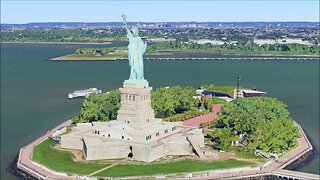The History of the Statue of Liberty: A Symbol of Freedom and Friendship
The History of the Statue of Liberty: A Symbol of Freedom and Friendship
The Statue of Liberty, standing proudly at the entrance of New York Harbor, is one of the most iconic symbols of freedom and democracy in the world. Gifted to the United States by the people of France, this colossal statue has a rich and fascinating history that spans over a century. From its conceptualization to its dedication, the Statue of Liberty has played a significant role in American history and continues to inspire millions of visitors from around the globe.
The idea for the Statue of Liberty can be traced back to the early 1860s when French political thinker Édouard René de Laboulaye proposed the notion of creating a monument to celebrate the friendship between France and the United States and to commemorate the centennial of American independence. French sculptor Frédéric Auguste Bartholdi was chosen to design the statue, drawing inspiration from ancient Roman goddesses and his own interpretation of liberty.
To fund the construction of the statue, both France and the United States launched extensive fundraising campaigns. In the United States, efforts were led by newspaper publisher Joseph Pulitzer, who appealed to the public for donations, raising over $100,000. The pedestal, on which the statue would stand, was funded by American philanthropists and completed through a combination of public and private donations.
Construction of the statue itself took place in France, with the pieces shipped to the United States in more than 200 crates. The statue's assembly on Liberty Island (formerly Bedloe's Island) in New York Harbor began in 1884 under the supervision of engineer Gustave Eiffel, famous for the Eiffel Tower.
The completed Statue of Liberty was officially dedicated on October 28, 1886, in a ceremony attended by thousands of spectators, including President Grover Cleveland. The dedication marked the end of a collaborative effort between France and the United States to create a symbol of liberty and friendship. The statue's unveiling was accompanied by a parade and various festivities, making it a historic and memorable event.
Standing at 305 feet, the Statue of Liberty is a towering figure with distinct features. The crown she wears is adorned with seven spikes representing the seven continents and the seven seas, symbolizing the universality of liberty. The tablet in her left hand bears the date of American independence, July 4, 1776. Her right hand holds a torch that illuminates the path to freedom, symbolizing hope and enlightenment.
Over the years, the Statue of Liberty has evolved to represent not only freedom but also a welcoming symbol for immigrants arriving in the United States. The statue's location at the entrance of New York Harbor made it one of the first sights seen by millions of immigrants arriving by sea in the late 19th and early 20th centuries, creating a powerful and enduring association between the statue and the American dream.
The Statue of Liberty stands as a testament to the enduring friendship between France and the United States and serves as a powerful symbol of freedom and democracy. From its conceptualization and construction to its iconic features and evolving meaning, the history of the Statue of Liberty is a story of collaboration, determination, and the pursuit of liberty for all. Today, as millions of visitors gaze upon Lady Liberty, she continues to inspire awe and admiration, embodying the principles that have defined the United States for generations.
Links for B.C.
Visit My Website
https://bcbegley.com
Follow Me On Facebook
https://www.facebook.com/B.C.Begley
Subscribe To My Patreon
https://www.patreon.com/bcbegley
Watch Me On YouTube
https://www.youtube.com/channel/UCGoUf-QQTlTN-BIh3ERCE9A
Follow Me On Twitter
https://twitter.com/BC_News1
Watch Me On Rumble
https://rumble.com/c/c-280191
Follow Me On Gab
https://gab.com/BC_Begley
-
 2:28
2:28
TJAlex
1 month agoStatue of Liberty National Monument, New York, NY, USA
141 -
 3:00
3:00
100 Historical Figures
3 months agoThomas Jefferson - The Architect of American Liberty (1743 - 1826)
92 -
 8:28
8:28
Inspired America
26 days ago🇺🇸”Why we put statues of these 6 Americans everywhere”🇺🇸
13 -
 4:02
4:02
Truth About Your American Government
1 month agoThe True Origin Of The Statue Of Liberty
180 -
 2:52
2:52
This Day in History by Jeff Bebar
3 months agoFebruary 12th Unveiled: Georgia's Founding to Civil Rights Triumphs - This Day in History
45 -
 0:17
0:17
In5D Esoteric, Metaphysical, and Spiritual Database
4 months ago $0.01 earnedThomas Jefferson statue removed from New York City Hall after 187 years
1701 -
 0:05
0:05
yungalone
4 months agoStatue of Liberty Poster
1 -
 0:06
0:06
yungalone
4 months agoStatue of Liberty Poster (Part 2)
1 -
 1:25
1:25
stufftodous
4 months agoUncovering the Secrets Behind America's Iconic Liberty Bell: A Fascinating Journey of Discovery!
5 -
 0:59
0:59
Convention of States Nevada
4 months agoCelebrating the enduring legacy of Martin Luther King Jr. on this impactful Martin Luther King Day!
23